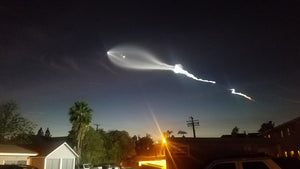March- The Great American Eclipse, Beehive Cluster and a Galaxy Pair
The Great American Eclipse
With the Great American Solar Eclipse only 1 month away, this is the last chance to prepare! On April 8th the Moon's shadow, about 115 miles wide, will traverse Mexico, sweep northeast from Texas to Maine, and cast darkness over parts of Eastern Canada for a time period of up to 4 minutes and 27 seconds. That's almost twice the length of 2017.
During a total solar eclipse, the Moon blocks the Sun's bright photosphere, unveiling the outer atmosphere—the ethereal corona. Composed of rarefied gas heated to millions of degrees, the corona, stripped of electrons, dances in streamers and loops sculpted by the Sun's magnetic field. This hauntingly beautiful display stands as one of nature's most awe-inspiring sights.
Positioning yourself within the path of totality is essential for the ultimate experience! While most of North America will witness a partial solar eclipse, the spectacle pales in comparison to the total eclipse. The path, stretching from Mexico to Canada, offers varied locations, but choosing spots with favorable weather conditions, such as Mexico or southern Texas, is recommended. If travel constraints arise, securing a spot within the path, wherever possible, guarantees a celestial event that won't disappoint.
Be sure to check our huge line of solar observation equipment. Whether it's specially designed glasses, solar filters, or solar telescopes; investing in proper equipment ensures a safe and unforgettable encounter. We've restocked a few essentials! Get Solar Equipment Here!
Beehive Cluster- M44
Nestled in the dim constellation of Cancer, the Beehive stands out as the only deep-sky object brighter than the stars of its host constellation. Under dark skies, it's visible to the naked eye; otherwise, binoculars are necessary. 8x32 binoculars reveal an elongated diamond shape, with a close double star at the diamond's northern tip. Through a telescope at low power, the cluster's blue-white stars dominate, dispersed with copper ones. Note the different star formation resembling Cepheus near the center.
Bode's Galaxy and Cigar Galaxy
The M81 and M82 galaxies reside in the Ursa Major constellation. M81, also known as Bode’s Galaxy, is a spiral galaxy situated about 11.8 million light-years away. Its companion, M82 or The Cigar Galaxy, is an irregular galaxy at a similar distance from Earth.
These galaxies share a gravitational connection, influencing each other's shape and composition. Nestled between them lies the Integrated Flux Nebula, though capturing it in photographs is challenging due to its faintness. Both Bode’s Galaxy and the Cigar Galaxy are part of the M81 Group of galaxies.
Located near the Big Dipper, Bode’s Galaxy and the Cigar Galaxy are easily spotted with binoculars.
Amateur astrophotographers often capture these galaxies together due to their proximity, a rarity in the night sky. It's unusual to find two bright, sizable galaxies within the same field of view, making them a popular subject for astrophotography enthusiasts.







